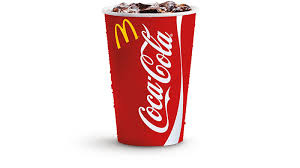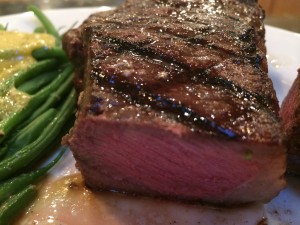Food Additives
Oh no- you might be drinking food additives that cause cancer. What? When I read Food-Babe’s alarms about caramel food coloring it forced me to the library, because the last thing I want is some toxic ingredient in my son’s food.
Food additives are chemicals added to food to make them (a) appear better (b) last longer and (c) taste better. The question is – how safe are they?
Any chemical is toxic, it is a matter of dose and exposure.
Your body produces an array of chemicals, byproducts of metabolism, and these by products are ok in small doses, but they are not in larger ones. Take formaldehyde, a carcinogen and yet we make formaldehyde in our body after we eat citrus fruits. Should we avoid citrus fruits? It is a matter of exposure, there is a base level of environmental exposure to this ingredient, the air we breathe, those lovely wood fires , car exhaust – and our body handles small amounts just fine. Our body converts it to formate and other chemicals and it harmlessly goes out in our urine. But yes, we can eat citrus fruits.
There is a level at which there is not an issue- that is called the NOAEL (No Observable Adverse Effect Level) – defined as the largest dose at which there is no significant adverse effect among those exposed. In the case of formaldehyde the EPA extrapolated the safe level based on animal experiments and that is about 0.2 mg of formaldehyde for every kg of body weight. To be even more fair if you get 10 to 100 times that level there is still no evidence of adverse effects.
Food Additives and NOAEL
The question is not if an ingredient is toxic or carcinogenic, the question is how much is safe, and at what level do we need to be concerned? Two aspirin will stop your headache, but a bottle will be toxic- one level is safe, and an effective medicine, the whole bottle may kill you.
Just a preview- here is what was found about NOAEL and caramel coloring:
– the NOAELs in all these studies were the highest dose levels tested,
– the effects of the caramel colours in 90-day studies were generally similar to those reported in the long-term studies,
– available reproduction and developmental toxicity studies, although limited, do not reveal any effects of concern,
– the studies reveal no effects on the reproductive organs,
– the effect of most concern, i.e. lymphocytopenia, can, as also stated by JECFA, best be evaluated from short-term studies, and
– the long-term studies support the conclusion that the caramel colours are not carcinogenic,
Caramel Coloring
Caramel coloring is added to provide a replacement of color in baking and beverages. Caramel coloring is in a lot of ingredients, from cola to coffee to pastries. It is also an anti-oxidant. Turns out there are four classes of caramel coloring that are used in the industry. With caramel coloring there is defined an acceptable daily limit, based on studies done in laboratory animals and humans. In the four classes of food coloring Class I- no limit defined, class II 0-160 mg/kg of body weight, Class III and Class IV are 0-200 mg/kg of body weight. When tested in rats and mice up to 10g/kg was found to be the NOAEL (which is 50 times what is allowed, and about 100 cokes a day).
When someone says caramel food coloring isn’t made by the same process that you make caramel by heating sugar, they are technically correct but not really. Caramel coloring is made by heating of carbohydrates just like you make caramel when you cook on the stove.
What About 4-methylimidazole (4-MEI)?
This is not a compound that is added to any food, but is a byproduct during cooking. This is byproduct of the Maillard reaction when cooking meat, roasting coffee beans, making chocolate, and is an impurity that is found when manufacturing caramel coloring (class III and IV).
Cancer and 4-MEI
In spite of what Food-Babe alleges in her blog, a two year study in rats was inconclusive regarding cancers with 4-MEI. The studies did show an increase in mice with some lung tumors – and the exposure exceeded the estimates of those caramel colors found in col (by about a thousand). This is bad news if you are a mouse drinking colas, but not if you are a rat (once again, lawyers are safe).
The European Food Safety Authority did their analysis of 4-MEI risk from caramel food coloring and found that the exposure of 4-MEI in any commercial product was below the threshold to be concerned about for cancer or other diseases. Here is an excerpt from their findings:
Caramel colours have been extensively tested for genotoxic potential in a variety of assays in vitro and in vivo. The results in in vitro systems were generally negative, with a few marginally positive findings, and no positive findings have been reported in in vivo assays. Overall the Panel concluded that there were no concerns regarding the genotoxic potential of caramel colours.
4-MEI does not cause DNA mutations – the ability to cause DNA mutations is what makes chemicals and radiation highly tumorigenic (able to make tumors). For example, sun exposure, especially while wearing a yellow bikini, is going to cause DNA mutations in skin cells that can lead to skin cancer. 4-MEI and the types of tumors that were found in those unlucky mice occur spontaneously in the animals, thus – the Europeans noted there was no concern for the use of 4-MEI in the caramel coloring of food
In 2012 the Center for Science in the Public Interest sent a letter to the Food and Drug Administration asking that these ingredients be left out of soft drinks because the risk related to it might increase cancers. They noted that the risk for drinking one can of soda a day for a lifetime might be as high as 48 cancers in one million people. The baseline cancer formation, meaning just living life – is higher than 48 in a million. There are a lot of reasons not to drink soda – this isn’t one of them.
There has even been published evidence that 4-MEI may “possess an ability to prevent tumor formation.”
Maillard Reaction
You know that lovely smell of roasted coffee, the taste of toast, and that great sear on a steak? Those are complex reactions when the sugars on the products are exposed to heat or flames. At the chemical level those are combinations of reactions that involve ammonia, sulfites, and heat – and they can produce, as a byproduct 4-MEI.
Just Stop
When you want someone to not like food or a product you make is sound disgusting. You make it evil. You make it seem like it is unnatural, appealing to the “all natural is better” (and who doesn’t like natural- except for beets – just never liked them).
At the most basic level we are all concerned about our food and it sources, and additives. I am- I have a 5 year old son. There are a lot of reasons I don’t let him drink soda (well not much, and only when his mom isn’t around) – this is not one of them. You don’t want to take the chance on those additives- that is ok. I applaud eating healthy – but don’t think your peach doesn’t contain carcinogens- it contains more than the caramel food coloring.
Testing food additives that have been classified as “safe” appeals to any skeptic. The scientific approach led science to discovering that trans-fats were more harmful than saturated fats (butter is better than margarine – didn’t we all think that, well our tongues told us that). But that was science, not fear mongering. Unscientific blather and fear mongering does not add to the public discourse.
REFERENCES:
European Food Safety Authority News – link here.
Scientific Evaluation of Food Coloring – link here.
Evaluating consistency in the interpretation of NTP rodent cancer bioassays: an examination of mouse lung tumor effects in the 4-MEI study.
Haseman JK.Regul Toxicol Pharmacol. 2013 Jun;66(1):109-15.PMID: 23545072
Does 4-methylimidazole have tumor preventive activity in the rat? Murray FJ.Food Chem Toxicol. 2011 Jan;49(1):320-2 PMID:21075160
Food caramels: a review. Sengar G, Sharma HK. J Food Sci Technol. 2014 Sep;51(9):1686-96 PMID: 25190825
Toxicity and carcinogenicity studies of Caramel Colour IV in F344 rats and B6C3F1 mice.
MacKenzie KM, Boysen BG, Field WE, Petsel SR, Chappel CI, Emerson JL, Stanley J.Food Chem Toxicol. 1992 May;30(5):431-43. PMID: 1644385



